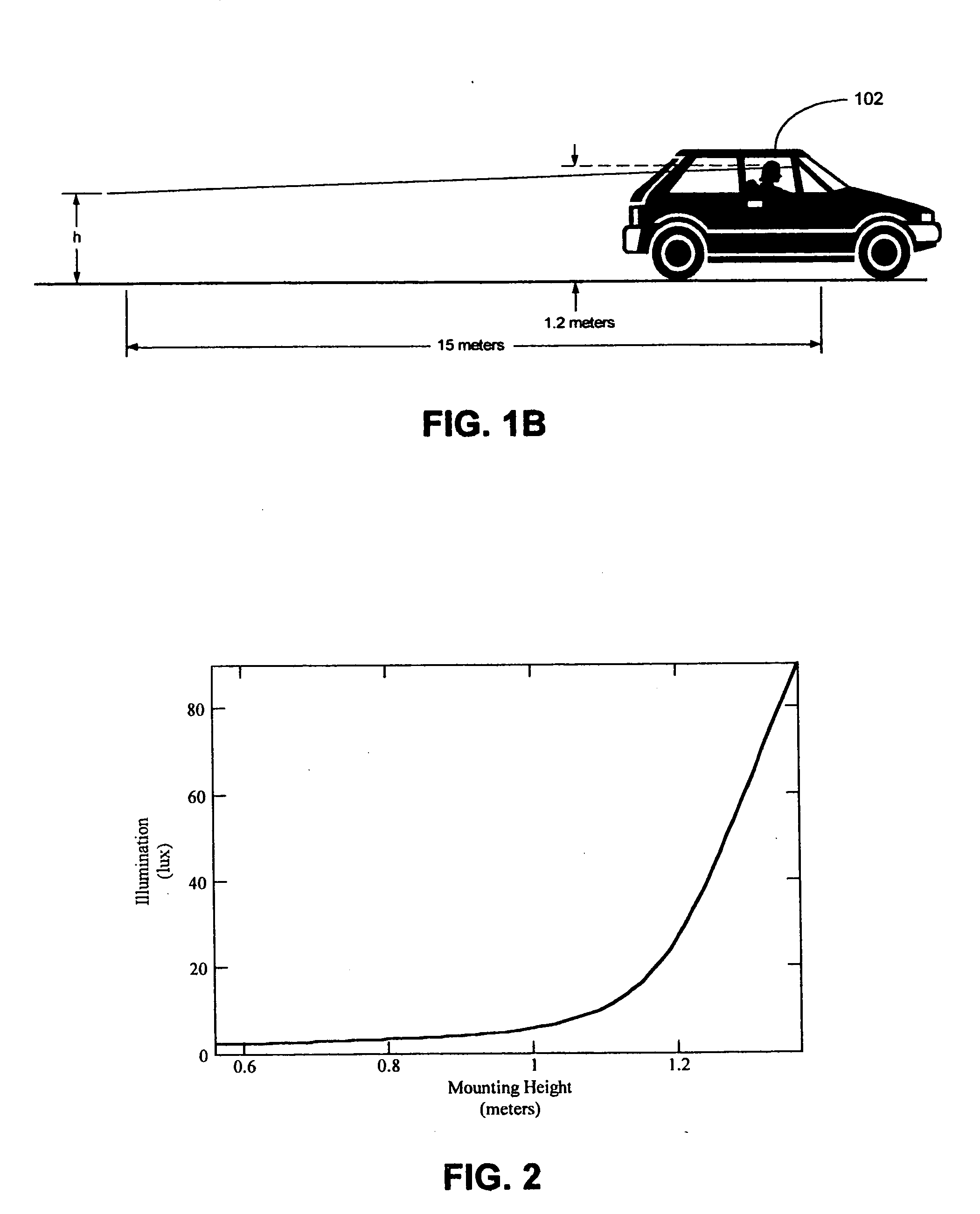Headlamp control to prevent glare
a headlamp control and glare prevention technology, applied in fixed installation, lighting and heating equipment, semiconductor devices for light sources, etc., can solve the problems of affecting the front end styling of the suv or truck, reducing the mounting height limit of the headlamps, and being difficult to reduce the mounting height significantly
- Summary
- Abstract
- Description
- Claims
- Application Information
AI Technical Summary
Benefits of technology
Problems solved by technology
Method used
Image
Examples
Embodiment Construction
[0040] The present invention is directed to a system for controlling at least one exterior vehicle light (e.g., low-beam headlamps, high-beam headlamps, tail lamps, fog lamps, etc.) of a controlled vehicle and includes an array of sensors and a control unit. The control unit is in communication with the array of sensors and the at least one exterior vehicle light and is capable of determining a distance and an angle from the at least one exterior vehicle light of the controlled vehicle to a leading vehicle. The control unit is operable to control operation of the at least one exterior vehicle light as a function of the distance and angle, based on the output from the array of sensors, and prevent the at least one exterior vehicle light from providing disruptive glare to a driver of the leading vehicle.
[0041] In another embodiment of the present invention, an illumination control system for controlling the at least one exterior vehicle light of a controlled vehicle includes an array...
PUM
 Login to View More
Login to View More Abstract
Description
Claims
Application Information
 Login to View More
Login to View More - R&D
- Intellectual Property
- Life Sciences
- Materials
- Tech Scout
- Unparalleled Data Quality
- Higher Quality Content
- 60% Fewer Hallucinations
Browse by: Latest US Patents, China's latest patents, Technical Efficacy Thesaurus, Application Domain, Technology Topic, Popular Technical Reports.
© 2025 PatSnap. All rights reserved.Legal|Privacy policy|Modern Slavery Act Transparency Statement|Sitemap|About US| Contact US: help@patsnap.com



